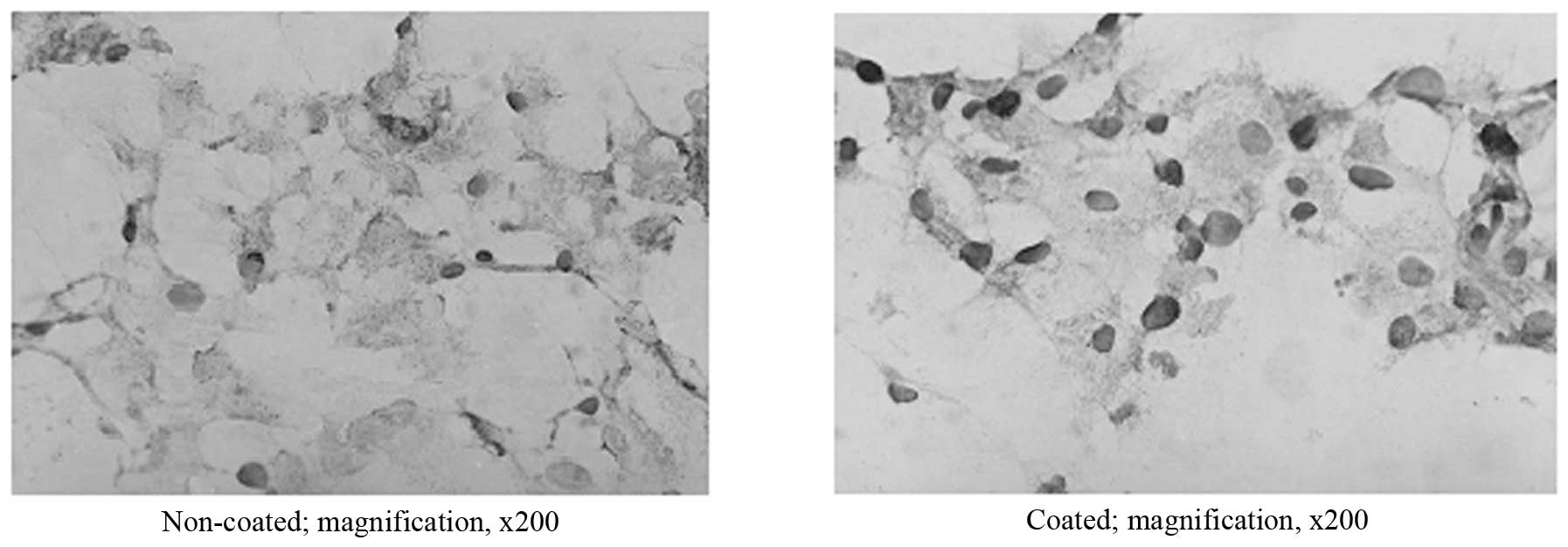Effect of fibronectin on HBV infection in primary human fetal hepatocytes in vitro
- Authors:
- Fang Wang
- Xiaogang Zhang
- Jing Zhang
- Ling Hui
- Yuming Wang
- Xiaohong Wang
View Affiliations
Affiliations: Department of Infectious Diseases, Anning Branch of Lanzhou General Hospital, Lanzhou Military Area Command, Lanzhou, P.R. China, Department of Orthopaedics, Hospital of Traditional Herb in Gansu, Lanzhou, P.R. China, Experimental Center of Medicine, Lanzhou General Hospital, Lanzhou Military Area Command, Lanzhou, P.R. China , Department of Infectious Diseases, Southwest Hospital, Third Military Medical University, Chongqing, P.R. China
- Published online on: August 10, 2012 https://doi.org/10.3892/mmr.2012.1029
-
Pages:
1145-1149
Metrics: Total
Views: 0 (Spandidos Publications: | PMC Statistics: )
Metrics: Total PDF Downloads: 0 (Spandidos Publications: | PMC Statistics: )
This article is mentioned in:
Abstract
This study was carried out to investigate the effect of fibronectin (FN) on primary cultured human fetal hepatocytes infected by hepatitis B virus (HBV) in vitro. Human fetal hepatocytes infected by HBV were cultured on culture dishes coated with FN in vitro. HBsAg and HBeAg in supernatants were detected by ELISA, HBcAg in nuclei by immunohistochemistry, HBV DNA by fluorescent quantitative PCR and covalently closed circular DNA (cccDNA) by nested PCR. The results were compared with cells cultured on dishes that were not coated with FN. Positivity for HBsAg and HBeAg in supernatants appeared from day 5 on the non-coated dishes, while positivity for HBsAg and HBeAg appeared from day 1 on the coated dishes. Positivity for HBcAg in the nuclei on the non‑coated dishes was displayed from day 2 with a positive rate of 15%, while positivity for HBcAg on the coated dishes was displayed from day 1 with a positive rate of >90%. HBV DNA in cells on the non-coated dishes was detected from day 4, while that on the coated dishes was detected from day 1. The non-coated dishes were positive for cccDNA from day 8, while the coated dishes were positive from day 2. FN coating is capable of accelerating HBV infection in primary cultured fetal hepatocytes in vitro, increasing the duration of HBV infection and the number of infected cells.
View References
|
1
|
Kornblihtt AR, Pesce CG, Alonso CR, et al:
The fibronectin genes as a model for splicing and transcription
studies. FASEB J. 10:248–257. 1996.PubMed/NCBI
|
|
2
|
Budkowska A, Bedossa P, Groh F, Louise A
and Pillot J: Fibronectin of human liver sinusoids binds hepatitis
B virus: identification by an anti-idiotypic antibody bearing the
internal image of the pre-S2 domain. J Virol. 69:840–848. 1995.
|
|
3
|
Wang YM, Chen GZ, Dong JH, Yuan LP, Liu GD
and Ding J: An in vitro perfusion method for the isolation
of hepatocytes. Chin J Dig. 14:175–178. 1994.(In Chinese).
|
|
4
|
Mabit H, Dubanchet S, Capel F, Dauguet C
and Petit MA: In vitro infection of human hepatoma cells
(HepG2) with hepatitis B virus (HBV): spontaneous selection of a
stable HBV surface antigen-producing HepG2 cell line containing
intergrated HBV DNA sequences. J Gen Virol. 75:2681–2689. 1994.
View Article : Google Scholar
|
|
5
|
Lu X, Block TM and Gerlich WH:
Protease-induced infectivity of hepatitis B virus for a human
hepatoblastoma cell line. J Virol. 70:2277–2285. 1996.PubMed/NCBI
|
|
6
|
Hynes RO and Yamada KM: Fibronectins:
Multilfunctional modular glycoproteins. J Cell Biol. 95:369–377.
1982. View Article : Google Scholar : PubMed/NCBI
|
|
7
|
D’Ardenne AJ and Barnard NJ: Paucity of
fibronectin in invasive lobular carcinama of breast. J Pathol.
157:219–224. 1989.PubMed/NCBI
|
|
8
|
Bitterman PB, Rennard SI, Adelberg S and
Crystal RG: Role of fibronectin as a growth factor for fibroblasts.
J Cell Biol. 97:1925–1932. 1983. View Article : Google Scholar : PubMed/NCBI
|
|
9
|
Junker JL and Heine UI: Effect of adhesion
factors fibronectin, laminin, and type IV collagen on spreading and
growth of transformed and control rat liver epithelial cells.
Cancer Res. 47:3802–3807. 1987.PubMed/NCBI
|
|
10
|
Spiegelman BM and Ginty CA: Fibronectin
modulation of cell shape and lipogenie gene expression in
3T3-adipocytes. Cell. 35:657–666. 1983. View Article : Google Scholar : PubMed/NCBI
|
|
11
|
Steele JG, Savolainen TA and Smith GJ:
Expression of fibronectin on clonally related transformed and
control sublines from an epithelial cell strain and a tumor line of
mouse alveolus. Cancer Res. 48:4933–4940. 1988.PubMed/NCBI
|












